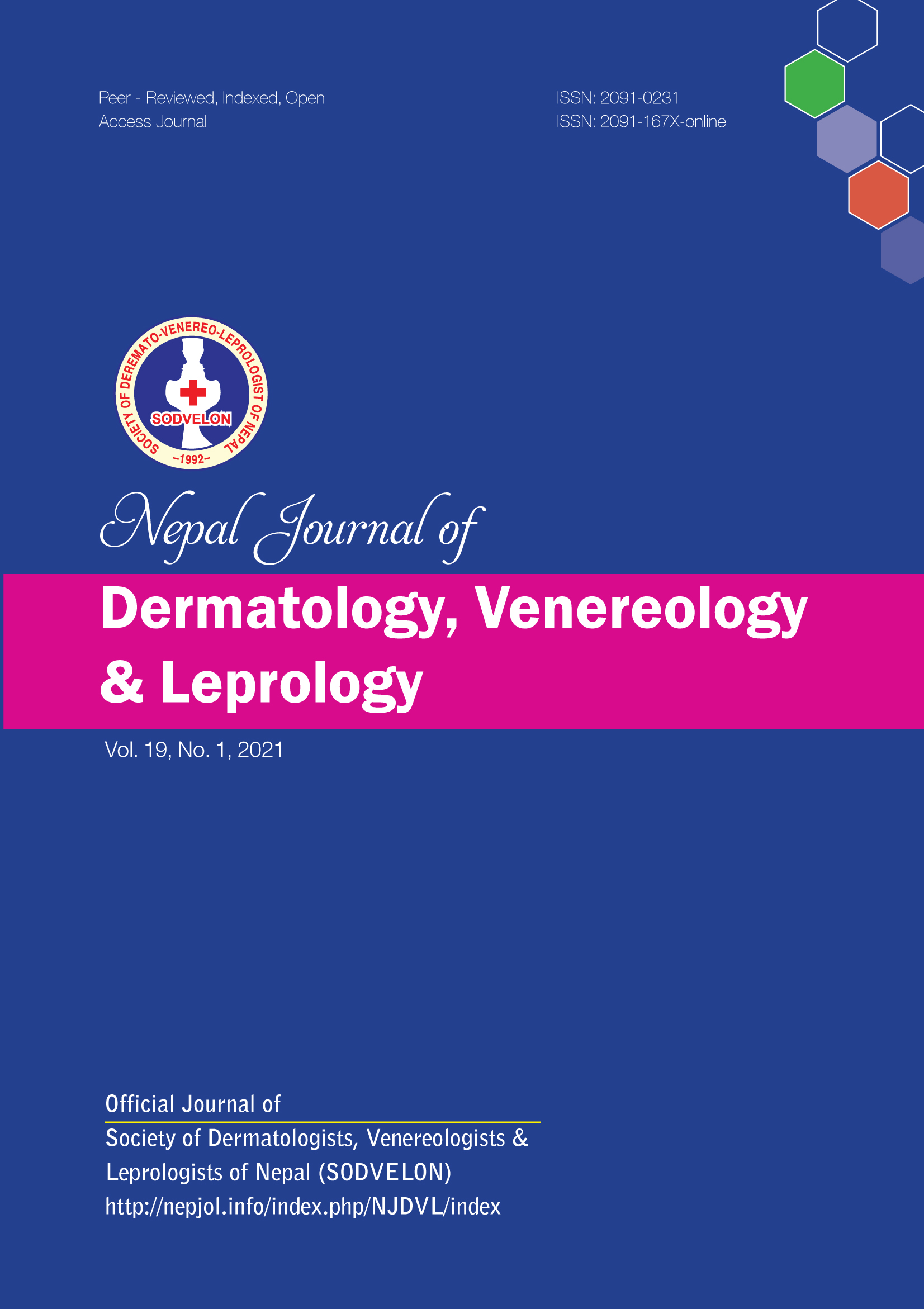A Hospital Based Cross Sectional Study Evaluating Haemoglobin, Iron Profile and Thyroid Function Tests in Women with Telogen Effluvium, Female Pattern Hair Loss, and Alopecia Areata
DOI:
https://doi.org/10.3126/njdvl.v19i1.34551Keywords:
Alopecia areata, Diffuse alopecia, Iron, Thyroid diseaseAbstract
Introduction:
Hair loss is one of the most frequent complaints for which patients see a dermatologist. The three most common causes of hair loss in women are telogen effluvium, alopecia areata and female pattern hair loss.
Objectives
The aim of this study was to investigate haemoglobin, iron profile and thyroid function tests in women with telogen effluvium, alopecia areata and female pattern hair loss.
Materials and Methods:
This was a hospital based cross sectional study conducted at the Department of Dermatology and Venereology, Nepal Medical College and Teaching Hospital (NMCTH). We recruited female patients with telogen effluvium, alopecia areata or female pattern hair loss who presented to our outpatient department between June 2019 and July 2020. Clinical and demographic data were collected and haemoglobin, serum iron profile and thyroid function investigated.
Results:
A total of 80 patients were recruited in the study period. The most common diagnosis was telogen effluvium (49, 61.25%) followed by alopecia areata (18, 22.5%) and female pattern hair loss (13, 16.25%). Although mean haemoglobin levels were within normal limits, inadequate ferritin levels for normal hair cycle were found in 77.55% of patients with telogen effluvium, 88.89% with alopecia areata and 84.61% with female pattern hair loss. Thyroid abnormalities were less commonly observed with more than 75% of the patients being euthyroid.
Conclusion:
Haemoglobin levels are not representative of true iron status in females with acquired alopecia. We therefore recommend investigating iron profile in all females with telogen effluvium, alopecia areata or female pattern hair loss.
Downloads
Downloads
Published
How to Cite
Issue
Section
License
Copyright on any research article is transferred in full to Nepal Journal of Dermatology, Venereology & Leprology upon publication. The copyright transfer includes the right to reproduce and distribute the article in any form of reproduction (printing, electronic media or any other form).




